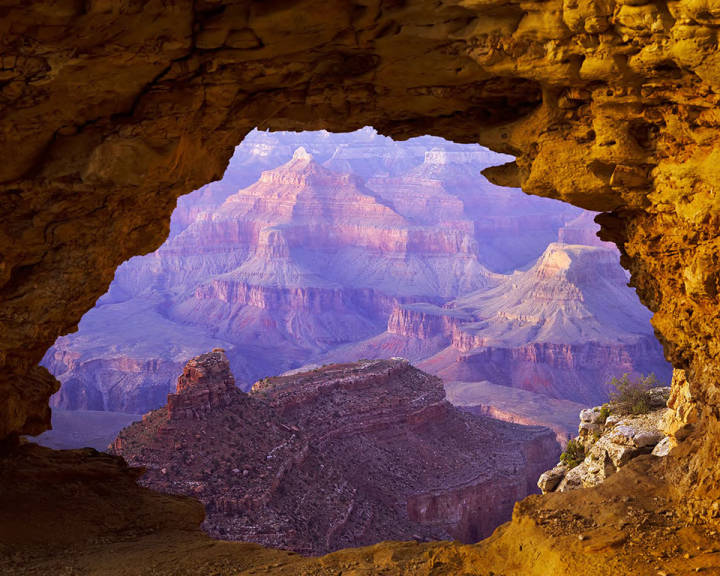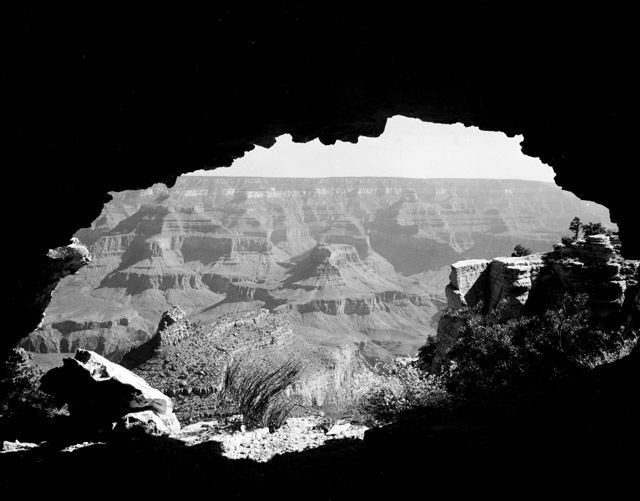
Limestone Window is a unique image of the Grand Canyon due to its lack of a horizon line, guiding the viewer inside the canyon and through its depths of light and shadow. As the title suggests, Muench uses the limestone formation in the foreground as a framing device for the background. While simply a trait of distance, the purple tones of the far canyon contrast with the yellow limestone, their vibrant colors a complementary combination.
An almost identical photograph taken by Muench’s father Josef, Kaibab Forest and Plateau (NAU.PH.2003.11.4.1.7.D4077), includes something that David Muench’s picutre does not: the horizon line. As can be seen using the comparison slider below, this addition almost traps the eye at the lightest point of the image, the empty sky above, causing the viewer to miss the detail of the canyon as it recedes into the distance.


Limestone Window was featured in an exhibition of David Muench’s work hosted by the National Parks & Conservation Association in 1984, as well as in the books Arizona (1971), with text by David W. Toll, and National Parks of America (1991), with text by Stewart Udall and James R. Udall.
This image is one of three original Muench-produced framed prints in the physical exhibit displayed on a temporary basis due to preservation concerns.
Taken along the South Rim in Grand Canyon National Park, Arizona.
